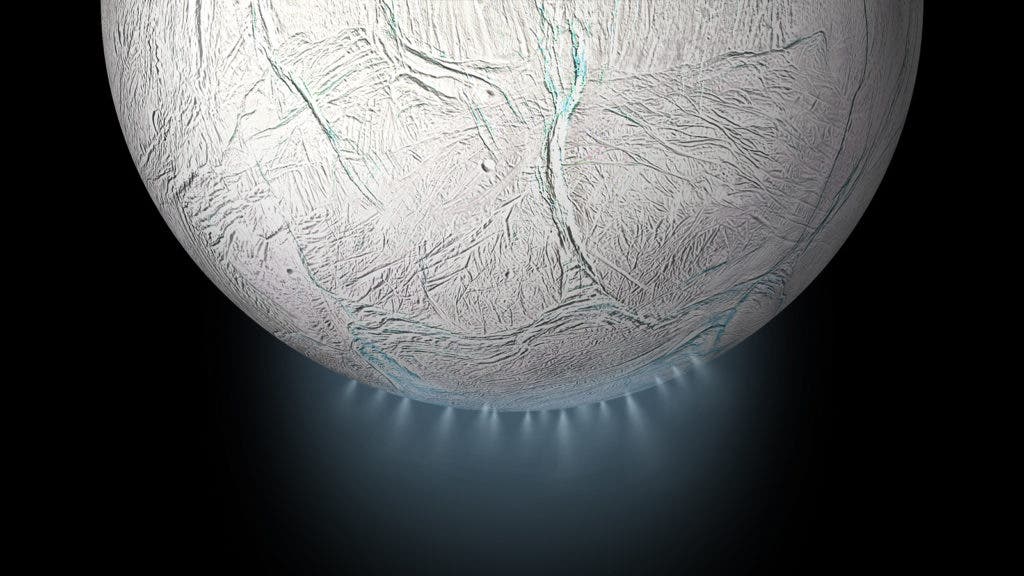Saturn’s icy moon Enceladus is one of the most promising places in the solar system for extraterrestrial life. Buried under miles and miles of ice lies a warm ocean that stretches across the whole body. Recent observations, like those performed by Cassini before it perished, suggest that geysers emanate from hotspots, capable of warming the ocean long enough for some form of life to appear. Now, in a new study, scientists have come just a tad closer to understanding Enceladus’ dynamics after they found evidence that suggests the moon’s core isn’t rocky but rather porous.

The resourceful Cassini spacecraft explored Saturn and its moon Enceladus for 13 years. A few months back its mission came to an end and NASA engineers instructed the craft to make a suicide jump into Saturn’s atmosphere. NASA thought it’s best to destroy the craft in a controlled fashion then risk having Cassini crash into Enceladus, contaminating the moon in the process.
When Cassini first arrived in Saturn’s system in 2004, NASA scientists marveled when they learned tall geysers were ejecting material hundreds of miles into space from the south pole. Eventually, scientists learned that there is a huge liquid ocean on the little moon and that the tall plumes are made of water-ice mixed with traces of carbon dioxide, ammonia, methane and other hydrocarbons. We also know that the ocean is convecting, meaning it’s active.
Heated from the core
The geysers erupt from cracks present on the moon’s southern polar region. These cracks are known as “tiger stripes” — parallel depressions that are 100km long and 500m deep. According to temperature readings made by Cassini, the tiger stripes are hotter than the rest of the icy crust. So, what’s the heat source?
Scientists are aware that tidal heating can explain some of the heat on the small moon, which is only 241 km (150 miles) in diameter. However, NASA has calculated that the power required to keep the geysers active is in the order of 5GW — enough to power the city of Chicago — and tidal heating can account for just a fraction of that.
In the new study, researchers at the Université de Nantes, France, have accounted for the missing heat. According to their study published in Nature Astronomy, Enceladus’ tiny core is not solid but rather porous.
The mushy core takes in water from the ocean, which the French researchers calculated it comprises 20% of the core’s mass. The tidal forces associated with the pore water are now more than sufficient to explain how Enceladus’ heat is generated. The researchers are careful to note that the porous core is not really like a sponge but rather more like sand or gravel.
The team led by Gael Choblet found heat dissipation from the core is not homogeneous, but rather appears as a series of interlinked, narrow upwellings with temperatures in excess of 363K (85°C). The computer model suggests that the hotspots are mainly concentrated at the south pole, in agreement with actual observations. Since the heat is concentrated on just one side of the moon, it’s natural to have enhanced hydrothermal activity which explains the hydrogen in the plumes.
One interesting finding is that the internal tide produces enough heat to warm Enceladus’ ocean for billions of years to come, with important consequences for the prospect of finding extraterrestrial life there. The moon itself is only a hundred million years old. By the most recent estimates, life here on Earth took about 640 million years to appear so if we’re to take this at reference, Enceladus still has a long way to go. Just as well, life might already be presented since the conditions there could be far more hospitable than the hell early Earth must have looked like.



